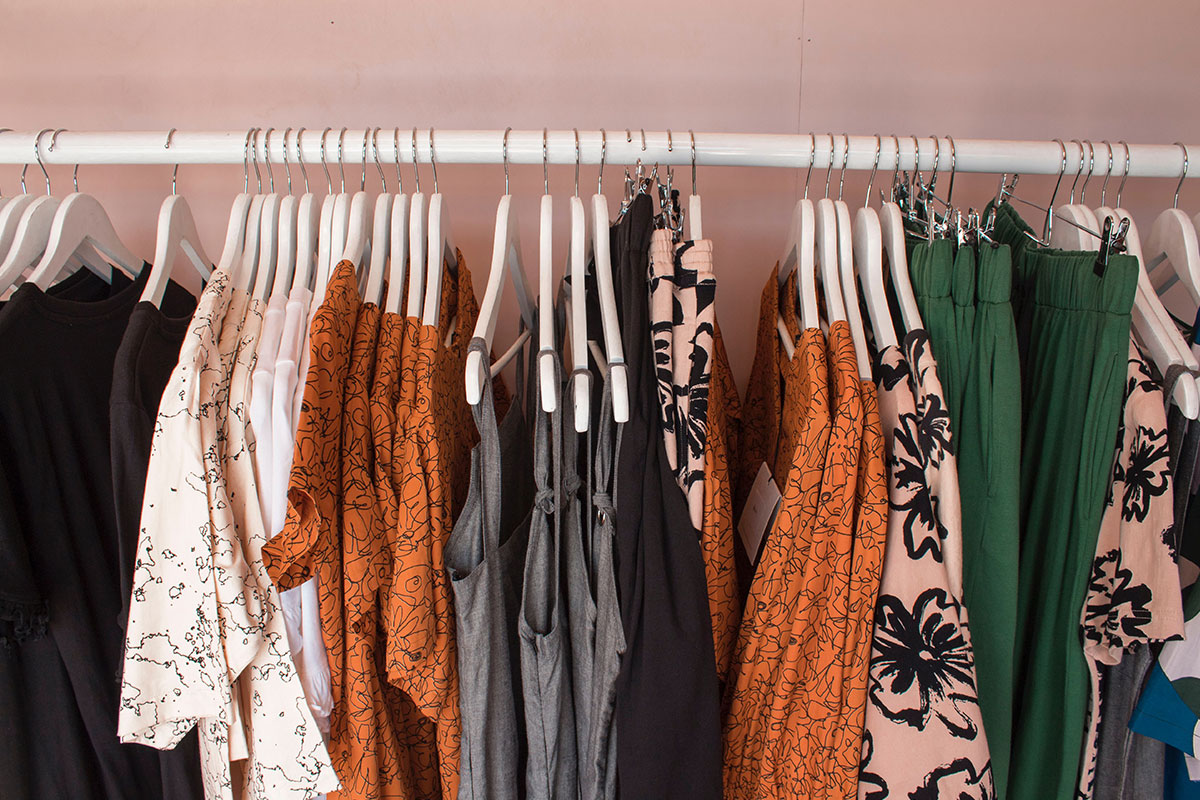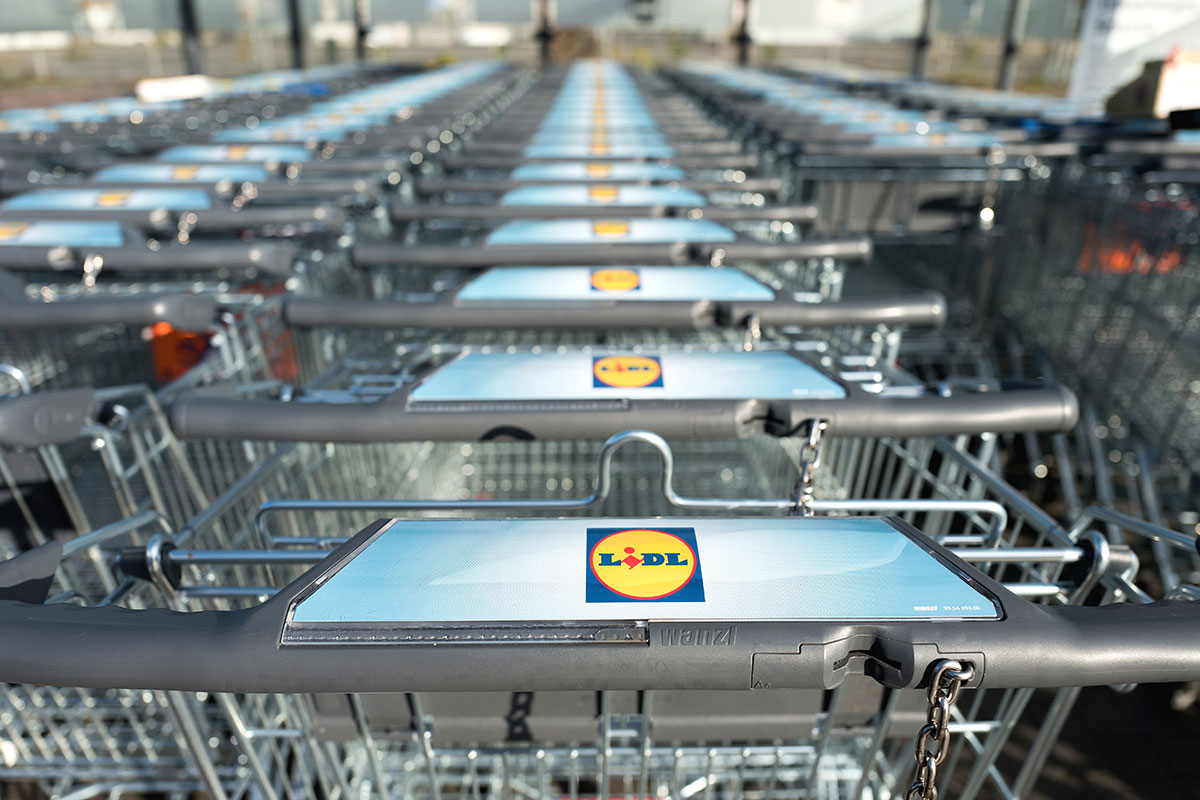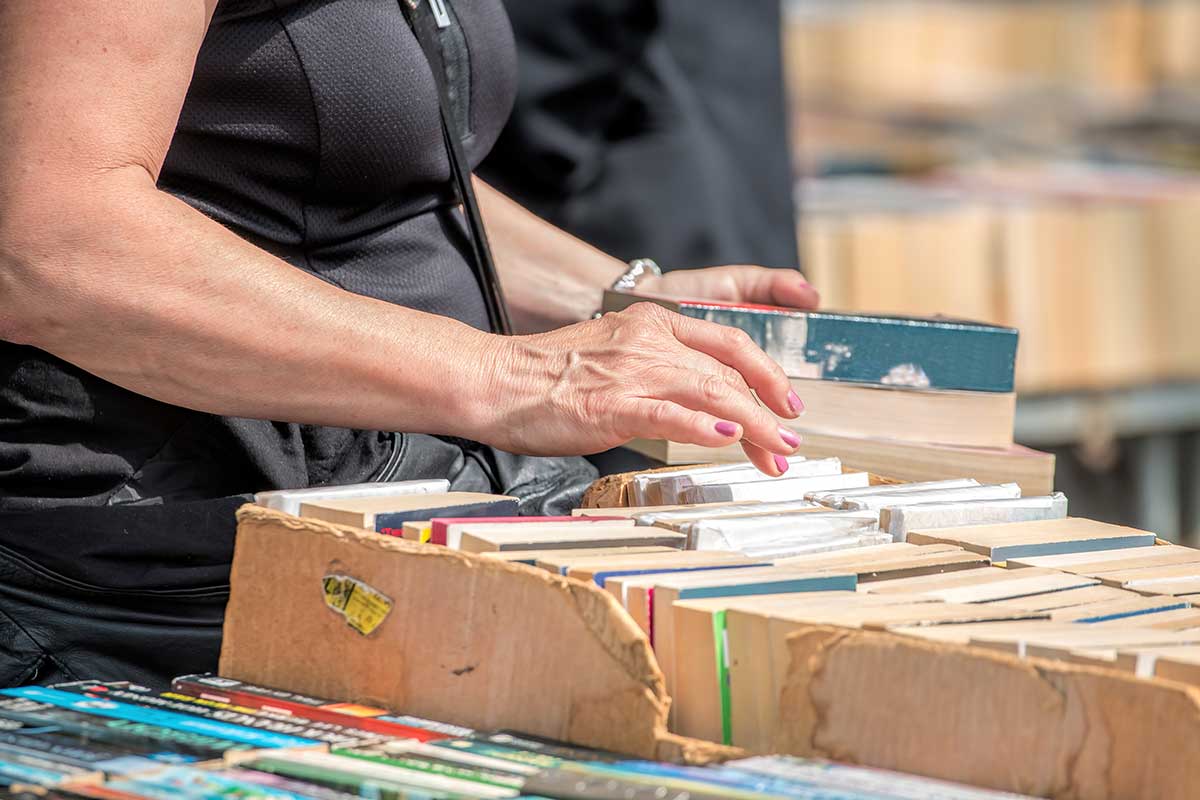
Sustainable, ethical fashion is on the rise, according to a recent article published by TechCrunch.
The concept is based on bringing awareness to, and bypassing, practices that are unethical to workers across the globe, hurting the environment and depleting resources (whether it’s water, animal products or stuffing landfills), and it’s taking direct aim at the common fast fashion, that we know of today.
We spoke with two local experts on sustainable fashion, one who is designing sustainable pieces of her own, and another who opened a sustainable boutique in Alexandria after not finding options that satisfied her need for ethically sourced, professional clothing.
Mimi Miller is the founder of Mimi Miller Womenswear, a woman-owned company based in Manassas that specializes in fashion-forward designs that are timely and classic, yet created with fabrics meant to last for years to come. Miller says trying to establish a sustainable wardrobe can be daunting, but it’s worth it.
“Sometimes it can feel like you’ve jumped into a rabbit hole,” Miller says. “You don’t need to wake up one day and immediately have a sustainable wardrobe—it takes time. I always encourage my customers to take baby steps, which is the same advice I live by myself.”
Nicole McGrew is the owner of Threadleaf, a women’s clothing boutique in Old Town Alexandria that is committed to bringing sustainable fashion to the city and beyond.
Both have been drawn to sustainable fashion from different angles, but see the opportunity as the same: It’s time to take a stand for sustainability that’s accessible for the DMV. Highlights from our conversation are below.
When did you first hear about sustainable fashion, and what got you interested in it?
MM: I can’t pinpoint a specific moment, but when I started to establish the brand in late 2015, the movie True Cost had released a few months before. The discussion around ethical fashion and sustainable fashion was really starting to swirl around and I just happened to be getting into the industry at that time. Before then, I had never given much thought to the waste that clothing can create. I was always focused on the artistic and creative side of the industry. When I read a statistic that said the average American throws away 86 pounds of clothing a year, a switch flipped for me. At that moment I made a conscious decision to not run a clothing business that creates excess waste, but one that works to reduce it.
NM: I don’t think there was a specific year that I heard about it, but before I studied law, I studied fashion at the Fashion Institute of Technology (FIT) in New York, and was very interested in textiles and fabrics. We spoke a lot about the impact of what you make and what happens over the course of the garment’s lifetime. I also think I became more aware of the conditions of the fashion industry in terms of the factory fires, child labor, etc. So when I transitioned into looking for professional (and more casual) attire later on (while working in law), I just remember looking for clothing and always being really concerned about fabrics, wanting things that aren’t synthetic , things that lasted and ones that were easy to take care of.
How would you define your style of sustainable fashion?
MM: Sustainable fashion is such a multifaceted topic and there are many ways to have a sustainable fashion mindset. For me, it means purchasing items that are versatile and can be worn across many seasons and years, rather than pieces that I can wear only once or twice a year. By purchasing items that I can wear multiple times for many years, I’m able to reduce the amount of clothing waste that I would produce. In addition, I like to shop from sustainably focused brands. For my business, it means and designing and producing garments that are versatile and multi-functional. I also produce in small batches so that I can cut down on the amount of inventory that I have at the end of the season. A few seasons ago I started creating look book kits as a way to reuse fabric scraps. I cut the scraps into swatches and send them to customers so they can experience the fabrics before shopping. A goal of mine is to also use more sustainably made fabrics like cupro and tencel.
NM: There is an eclecticness to it. It’s very clean, with clean lines and items that you can dress up or dress down. I also find that there aren’t as many geometric interests, shapes or unnecessary added details on the pieces.
And what has the reaction been like from the community to have a local source that is offering sustainable fashion?
MM: The community has been really receptive of it and eager to learn more about how they can have a more sustainable wardrobe. It’s always so encouraging to hear how much people appreciate that I am locally producing sustainable garments that are also high-end and well-made.
NM: Very positive. The reason I opened the store was because I was having a hard time finding brands and looks that I could see in person. For most of the companies making sustainable items, they’re smaller, it takes a while to have items shipped to you, and I have found that a lot of my customers were experiencing that as well. So to have a lot of brands under one roof and to be able to see how they fit and see how they feel, there’s that discovery element that you don’t get when you’re shopping online. Plus, most of the brands have different sizing, for people who are small to those who are tall, and some brands are even one-size-fits-all. It’s also been interesting to see how older customers react to sustainable fashion because many of them are able to familiarize with getting more comfortable with it, considering they have experiences where maybe they remember when their mother would make them clothing or when their clothing would last for years. And for younger customers, they like knowing that there are only a few pieces that are available and that it’s not mass produced.
What sustainable fashion brands do you look to for inspiration, or that you love wearing yourself?
MM: I love Everlane, Cuyana and Nisolo.
NM: If I had to choose two, I would choose the two that I was wearing even before I opened Threadleaf. Veronique Miljkovitch, she is great for more professional, easy-to-take-care-of pieces. Her brand is what comes to mind when you think of the Washington, DC working woman: chic dresses and other core professional pieces. She was my go-to designer before I owned the shop. Every piece is made in Canada and is super committed to sustainability. The other is CUS, which makes all of its sustainable products out of Spain and Portugal. It has really easy pieces that are a little more casual, and can be weekend wear.
What should readers know about sustainable fashion that they might not think of?
MM: Sustainability is such a buzz word right now. Everyone is throwing it around in their branding. Most brands do a pretty good job of explaining their position on their website, however, to be safe, I always recommend emailing the company if you still have questions. Sustainability in the fashion industry drills down into so many different levels, which means there are more questions to ask. It’s not only about producing less to create less waste, but also the production process of fabric and how it impacts our environment. Are the dyes and chemicals getting into our soil? Are you creating new fabrics for the mill to make or are you using deadstock fabrics? How do you handle excess inventory at the end of the season? Sustainability is even involved in a brand’s packaging!
NM: The things that they should look for (and what I look for) are fibers. Hemp is an amazing fabric. Silk, wool, organic cotton and tencel are others. These are all fabulous fibers that you should look for when you’re shopping. Also, look for how the garment is meant to be taken care of. Almost everything I sell, you can wash it in cold water and hang to dry. Stay away from things that need to be dry-cleaned because that can limit the lifetime of the garment, but there are also so many resources that go into caring for it.
And why is sustainable fashion more important now than ever?
MM: As we consume more and more products, we are creating more waste; our landfills are growing, more trees are being cut down and more. Consuming isn’t bad as long as we are thinking about how to reduce waste. The clothing industry is huge, not only in our country, but globally. It’s imperative that we think twice about how we shop and produce clothing, and do what we can to reduce our footprint. It’s a known fact that the resources the Earth provides are being used at a much faster rate than they can be replenished; we must think about future generations. I want them to have an even better environment than we have now.
NM: My two-word answer is the planet. Fashion is the second most-polluting industry after the oil and gas industries, and we have to think about how our consumption is affecting the world around us. You really have to think about what you’re buying, how it impacts the resources that we have, and make sure that we don’t leave things worse than when we started. They all add up.
Want more shopping content sent directly to your inbox? Subscribe to our e-newsletter, here.




